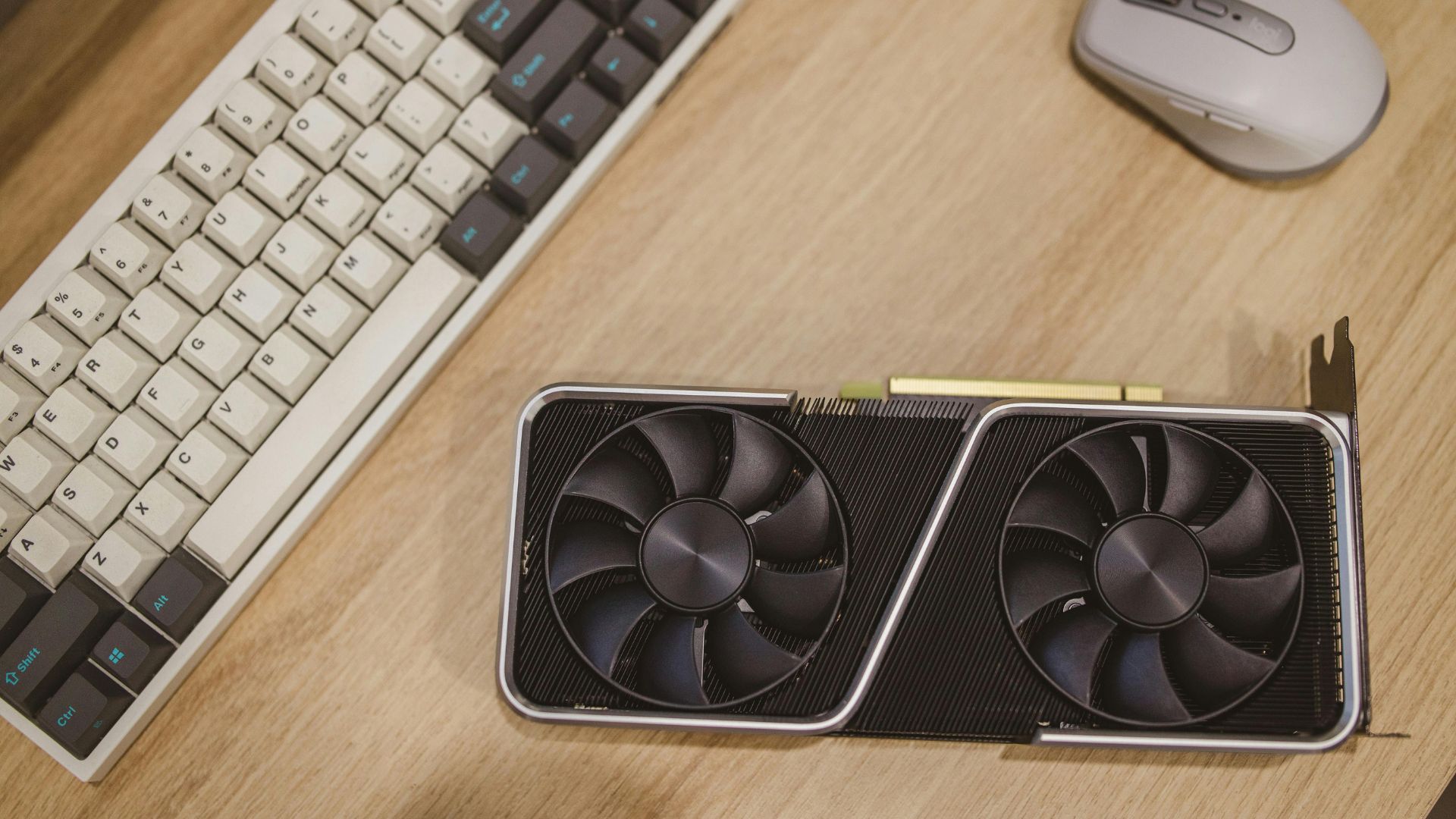Deploying AI models into production is where theory meets reality. You’ve spent months training and fine-tuning, but once your model starts serving live requests, the spotlight shifts to efficiency.
How quickly can it respond? How much does each inference cost? And most importantly – are your GPUs being used to their full potential?
Optimizing GPU usage in inference deployment isn’t just about squeezing out performance gains. It’s about creating systems that are faster, cheaper and more reliable. For CTOs, ML engineers, and AI enthusiasts, mastering GPU optimization can be the difference between a prototype that impresses in the lab and a production service that scales to millions of users.
Why GPU optimization matters
GPUs are the workhorses of modern AI. Their massively parallel architecture makes them ideal for handling tensor operations, from convolutions in computer vision to attention mechanisms in LLMs. But raw GPU power isn’t enough – misconfigured deployments can leave expensive hardware sitting idle or introduce unpredictable latency spikes.
Optimizing GPU usage improves three critical outcomes:
- Performance: Faster inference times and smoother user experiences.
- Cost efficiency: Lower spend per prediction by maximizing utilization.
- Scalability: More consistent behavior under variable traffic loads.
Think of it as tuning a high-performance engine: the horsepower is there, but unless it’s running at the right RPMs, you’re wasting fuel and leaving speed on the table.
Optimize model size without sacrificing accuracy
One of the most effective ways to improve GPU efficiency is to shrink the workload itself. Techniques like quantization, pruning and distillation reduce the computational footprint of models while maintaining accuracy.
- Quantization converts weights and activations from floating-point precision (FP32/FP16) to lower formats like INT8, which reduces memory bandwidth requirements and speeds up inference.
- Pruning removes redundant weights or entire channels, decreasing the number of operations per forward pass.
- Distillation trains a smaller “student” model to mimic a larger “teacher,” keeping performance while lightening the load.
These optimizations let GPUs handle larger batch sizes or serve more requests per second, directly lowering cost per inference.

Batch intelligently to balance throughput and latency
Batching is the bread and butter of GPU efficiency. Instead of processing one request at a time, you group multiple requests into a single batch, keeping all GPU cores active. The result is higher throughput.
But batching introduces a trade-off. Wait too long to fill a batch and users feel the delay; push batches too frequently and you underutilize the GPU. The sweet spot depends on your application:
- Real-time applications like conversational AI need micro-batches (e.g., 1–10 requests) to keep latency under control.
- Batch processing jobs like nightly analytics can push batch sizes into the hundreds or thousands.
Tuning batch sizes dynamically based on traffic levels is one of the most impactful optimizations you can make.
Use GPU partitioning and resource sharing
Modern GPUs support multi-instance GPU (MIG) and other partitioning techniques that allow a single card to be divided into smaller, isolated instances. This is especially powerful for multi-tenant environments or when running models with different performance needs.
Partitioning ensures no single workload monopolizes resources, and it allows smaller models to run cost-efficiently without wasting the full GPU. For organizations deploying multiple inference services side by side, MIG provides a practical path to higher overall utilization.
Profile before you scale
It’s tempting to throw more GPUs at a problem when inference slows down, but without profiling, you may just multiply inefficiencies. Tools like Nsight Systems, TensorRT Profiler or framework-level analyzers show exactly where bottlenecks occur – whether in kernel execution, memory bandwidth or data transfer.
A proper profiling cycle can reveal that the bottleneck isn’t compute at all – it might be CPU preprocessing, I/O latency or suboptimal batching logic. Fixing these first often yields bigger gains than adding more hardware. Scaling only after profiling ensures you’re paying for performance, not idle silicon.
Optimize data pipelines and memory access
Even the most powerful GPU stalls if the data pipeline can’t keep up. Efficient input pipelines – whether streaming video frames, tokenized text or sensor data – are essential. Techniques like prefetching, asynchronous data loading and caching reduce the risk of GPUs sitting idle waiting for input.
Memory management is equally important. Ensure weights and activations fit into GPU memory by offloading infrequently used tensors or using memory-efficient formats. For large models, techniques like KV cache management in transformers can significantly reduce redundant computation across tokens.
Tune kernels and leverage inference runtimes
High-level frameworks like PyTorch and TensorFlow make development easy, but they don’t always generate the most efficient kernels for production inference. That’s where inference runtimes like TensorRT, ONNX Runtime or TorchScript come in. They compile models into optimized graphs, fuse kernels, and exploit hardware features like tensor cores for maximum speed.
Investing time in model compilation can unlock double-digit performance gains. Combined with operator fusion and precision tuning, optimized runtimes help extract every ounce of performance from GPUs.
Deploy with autoscaling and load balancing
GPU optimization isn’t only about what happens on a single device. At the system level, autoscaling ensures you have just enough GPUs to handle demand – no more, no less. When traffic surges, new instances spin up; when it quiets down, they spin down to save costs.
Load balancing further ensures that requests are distributed evenly across GPUs, avoiding hot spots that cause latency spikes. Intelligent autoscaling policies, combined with real-time observability, make deployments resilient and cost-efficient.
Monitor, iterate and refine

GPU optimization is not a one-time task. Traffic patterns shift, models evolve, and hardware capabilities improve. Continuous monitoring of GPU utilization, throughput and latency provides the feedback loop needed to refine deployments.
Dashboards that surface p95/p99 latencies, queueing delays and cost per 1,000 inferences allow teams to make informed adjustments. The organizations that get ahead are those that treat optimization as an ongoing discipline, not a post-deployment afterthought.
What it all adds up to
Optimizing GPU usage in inference deployment is about more than wringing extra FLOPs from silicon. It’s about building systems that are fast, economical and robust under real-world conditions. From model optimization and smart batching to profiling, partitioning and autoscaling, each technique compounds to improve overall efficiency.
For ML teams, the reward is smoother scaling and happier users. For CTOs, it’s predictable costs and confidence that infrastructure investments are paying off. And for the broader AI ecosystem, it’s proof that deploying models at scale doesn’t have to mean spiraling expenses or brittle performance.
In short: a little tuning goes a long way. With the right optimizations, your GPUs can deliver not just raw power but production-grade efficiency, ensuring that your AI deployments run as smoothly in the field as they do in the lab.
Frequently Asked Questions About Optimizing GPU Usage in Inference Deployment
Why does GPU optimization for inference matter in production?
Because it directly improves three outcomes: faster inference performance, lower cost per prediction, and smoother scalability under traffic spikes. Misconfigured deployments leave GPUs idle and create latency spikes—optimization fixes that.
How can I shrink model compute without losing much accuracy?
Use model-size optimizations: quantization (e.g., FP32/FP16 → INT8), pruning (remove redundant weights/channels), and knowledge distillation (train a smaller “student” from a larger “teacher”). These reduce memory/ops so each GPU serves more requests.
What batching strategy should I use for throughput vs. latency?
Batching boosts utilization, but balance it with delay. Real-time apps (e.g., conversational AI) prefer micro-batches (around 1–10 requests); offline/batch jobs can use much larger batches. Dynamically tune batch size based on traffic.
When should I use GPU partitioning like MIG?
Use MIG/partitioning to split a single GPU into isolated instances for multi-tenant services or smaller models. It prevents one workload from monopolizing resources and raises overall utilization across diverse inference services.
Why profile before adding more GPUs, and what should I look for?
Profiling reveals true bottlenecks (kernel execution, memory bandwidth, data transfer). Tools like framework analyzers or TensorRT profilers can show if issues are actually CPU preprocessing, I/O, or suboptimal batching—fixing these often beats scaling hardware.










